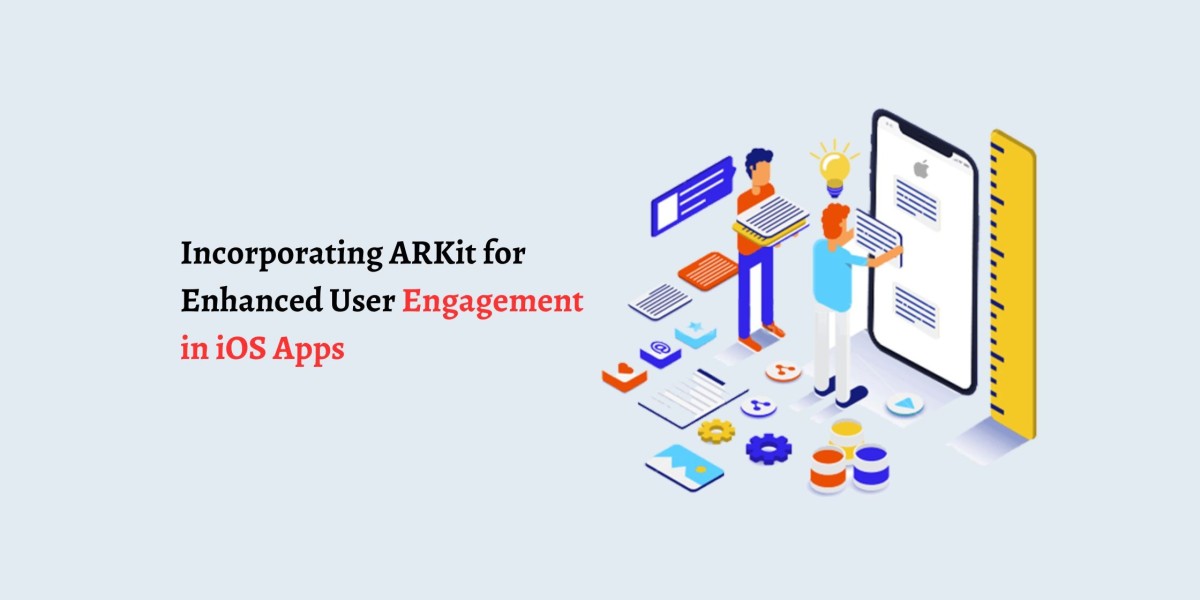In this article, we will explore how any top rated iOS app development company can leverage ARKit for enhancing user engagement in iOS apps.
Understanding ARKit:
ARKit was launched by Apple to build augmented reality. It provides developers with the tools and resources to create immersive AR applications that blend the digital world with the real world. With ARKit, developers can harness the device's camera and motion sensors to track the environment and place virtual objects within it.
Enhanced User Engagement with ARKit:
1. Immersive Experiences:
ARKit allows developers to create immersive and interactive experiences that captivate users. Whether it's a virtual tour of a museum, a 3D product demonstration, or a gamified experience, ARKit's capabilities make users feel like they are part of the app's world. This immersive quality leads to longer user engagement as individuals spend more time exploring and interacting with the app.
2. Visual Storytelling:
Augmented reality provides a dynamic platform for visual storytelling. Developers can use ARKit to tell stories in innovative ways by placing characters or objects in the user's environment. This storytelling technique not only engages users but also creates memorable experiences that keep them coming back for more.
3. Enhanced Learning and Education:
ARKit can be a powerful tool for educational apps. It enables interactive learning experiences by overlaying educational content on real-world objects. For example, an app can teach anatomy by allowing users to explore 3D models of the human body or offer language learning by labeling objects in the user's surroundings. These engaging educational experiences make learning more enjoyable and effective.
4. Retail and E-Commerce:
ARKit has revolutionized the way people shop online. Retail and e-commerce apps can now provide users with the ability to visualize products in their own space before making a purchase decision. For instance, users can see how a piece of furniture would look in their living room or try on virtual clothing. This feature not only boosts user engagement but also reduces the rate of returns, as users have a better understanding of the product before buying.
5. Entertainment and Gaming:
ARKit has been a game-changer for the gaming industry. Mobile games have taken on a new dimension with augmented reality. Games like Pokémon GO and AR-based puzzles have gained immense popularity by creating a fusion of the virtual and physical worlds. Users are more engaged as they explore their surroundings in search of digital treasures or compete with friends in real-time AR battles.
6. Solving Real-World Problems:
ARKit can be used to solve practical problems. For instance, navigation apps can overlay directions on the user's view, making it easier to follow a route while walking. Apps designed for home improvement can help users visualize how different paint colors or furniture choices will look in their homes. By addressing real-world needs, these apps engage users in a meaningful way.
7. Brand Engagement:
Augmented reality offers unique opportunities for brand engagement. Brands can create AR experiences that allow users to interact with their products in novel ways. For example, an automotive company could let users explore the interior of a car or customize its features in an AR environment. Such brand engagement not only keeps users engaged with the app but also enhances the brand's image and recognition.
How to Incorporate ARKit for Enhanced User Engagement:
Now that we understand the potential of ARKit in enhancing user engagement, let's explore the steps to incorporate ARKit into your iOS app development solution efforts.
Set Clear Objectives: Define the purpose of AR in your app. What do you want to achieve? Whether it's product visualization, gamification, or education, having a clear objective will guide your development process.
Choose the Right ARKit Features: ARKit offers various features, including scene understanding, object recognition, and face tracking. Select the features that align with your app's objectives to ensure a seamless and engaging user experience.
User-Centered Design: Consider the user's perspective. Design interactions and interfaces that are intuitive and user-friendly. The goal is to create an experience that enhances engagement, not one that frustrates users.
Optimize for Performance: AR experiences demand significant processing power. Optimize your app to ensure it runs smoothly on a variety of iOS devices. Performance issues can drive users away.
Testing and Iteration: Extensive testing is essential to ensure your AR features work as intended. Gather user feedback and iterate on your design to continually enhance engagement.
Educational Resources: Apple provides extensive documentation, sample code, and tutorials for ARKit. Utilize these resources to learn how to implement AR features effectively.
Collaboration with AR Experts: If your team lacks experience with augmented reality, consider collaborating with experts in AR development. Their insights and knowledge can be invaluable in creating engaging AR experiences.
Case Studies: Real-World Success with ARKit:
Let's explore a few real-world examples of successful iOS apps that have incorporated ARKit to enhance user engagement:
IKEA Place: IKEA's AR app allows users to place virtual furniture in their own homes. This immersive experience helps customers make informed purchase decisions and enhances user engagement.
Pokemon GO: This augmented reality game took the world by storm, encouraging users to explore their surroundings in search of virtual Pokemon. It's a prime example of how AR can drive user engagement and social interaction.
Civilizations AR: An educational app that uses AR to teach history and culture. Users can interact with 3D models of historical artifacts, fostering an engaging learning experience
AR Measure Kit: This app leverages ARKit to provide accurate measurements of objects in the real world, simplifying everyday tasks and engaging users with a practical utility.
Conclusion:
ARKit has opened up a world of possibilities for iOS app developers to enhance user engagement. Whether you're in the fields of education, retail, entertainment, or any other industry, ARKit can be a powerful tool to captivate your audience. By providing immersive experiences, solving real-world problems, and promoting social interaction, augmented reality is transforming the way users interact with iOS apps. Incorporating with a pioneer iOS app development company gives you a competitive edge and open up new avenues for innovation and engagement.








